
You know the most commonly grown herbs by name, sight and scent: rosemary, mint, oregano, thyme, parsley, basil and chives. But, can you recognize at least 10 more, lesser-known herbs that have the potential to grow right outside your door?
You may need to dig amongst your spice jars to freshen up your memory as you find a few forgotten flavors. Open each jar and take a whiff. Let the aroma fill you with a longing for growing that very same herb in your own garden.
There are several good reasons why you should grow and consume fresh herbs.
In short, herbs:
- have distinctive flavors which increase the delectableness of your meals (keep in mind that some herbs are better fresh: tarragon, parsley, thyme)
- contain a variety of essential micronutrients
- plus, they boost your overall health and immune system
Imagine a pizza sauce without oregano, or a pesto without basil. Sounds pretty bland to me.
Naturally, you can find exceptions, such as carrot top pesto with carrot greens, baby spinach, garlic and cashews. It’s tasty, just not the same. If you want the real deal, you’re going to have to plant some herbs this year.
Given that you can grow herbs indoors all year round, let’s get to that list of rare herbs and see what new flavors might find a space in your garden.
14 Lesser Known Herbs To Enhance Meals As Well As Tea-Time
Herbs and spices are often used interchangeably, though they aren’t quite the same.
In general, herbs are derived from herbaceous plants, such as leafy greens. They tend to be less strongly flavored than spices. Spices, on the other hand, come from aromatic seeds, flowers, bark and roots that are dried and pulverized. Imagine cinnamon and cloves for this one.
Let’s not get caught up what constitutes an herb or a spice though. Instead, we’ll focus on those plants that enhance the life of your garden, as well as the meals you serve to family and friends. Some are sweet, others lend themselves to salty dishes.
Plant some of each and your herb garden will serve you well.
1. Anise (Pimpinella anisum)
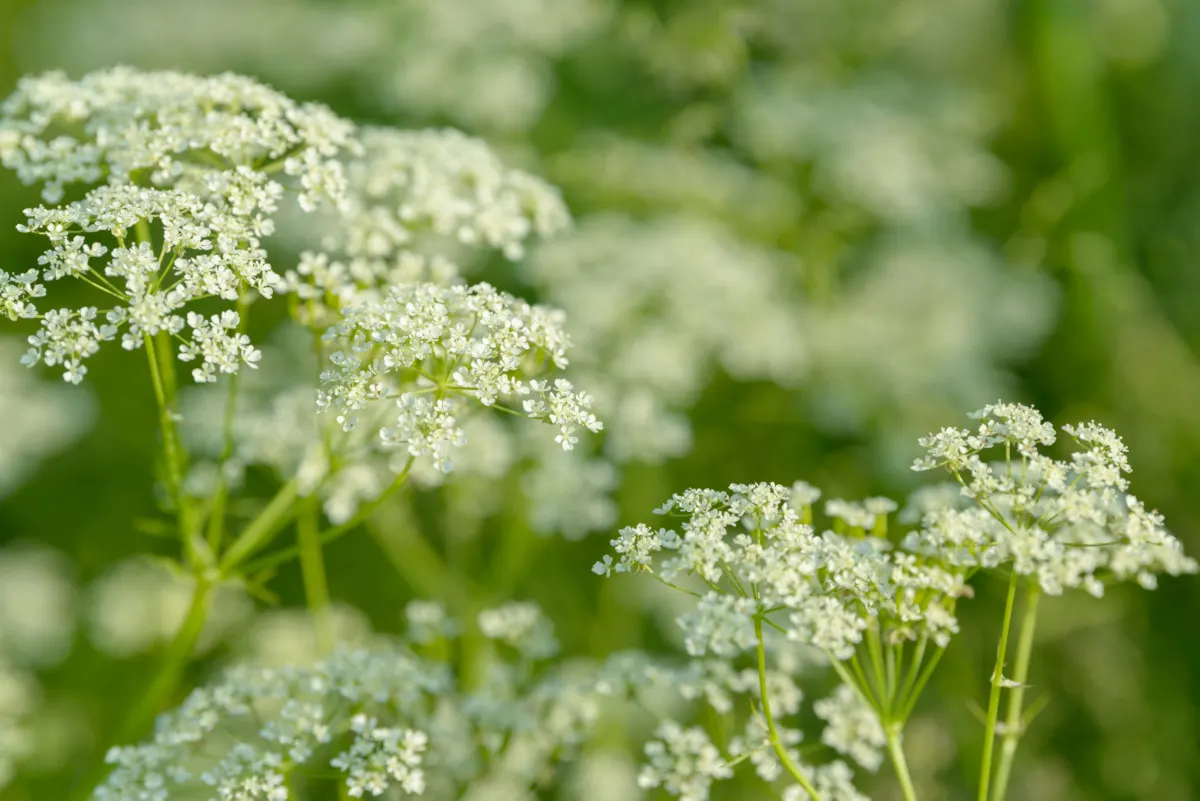
If you are looking to introduce a licorice flavor into your life, look no further than sowing anise seeds in your garden.
I know, not everyone loves anise, though it’s one of those underrated and lesser-known herbs that demands you give it a try.
Most commonly, people think about consuming the aromatic seeds (that’s a spice!). Anise seeds are often used in the cuisines from Italy, Germany, India, the Middle East and far west in Mexican cooking.
You find that typical anise scent in soaps, perfumes, lotions, potions and so on. Not that your garden harvest will take you that far. You will, however, be able to harvest a significant amount of anise seeds for tossing in pastries such as biscotti. Toast the anise seeds and add them to meatballs, blend them with other spices as a crust for all sorts of meat dishes. You can add them to homemade mulling spices. Or simply go ahead and make yourself a mug of anise tea.
Just so you know, the leaves of anise are edible too. They are extremely tasty in salads, on sandwiches and perched atop a poached egg.
Anise seeds resemble carrot and caraway seeds and the time to plant them is two weeks before the average last frost date of spring. Try it out, you may have found your new favorite herbal spice.
2. Chervil (Anthriscus cerefolium)
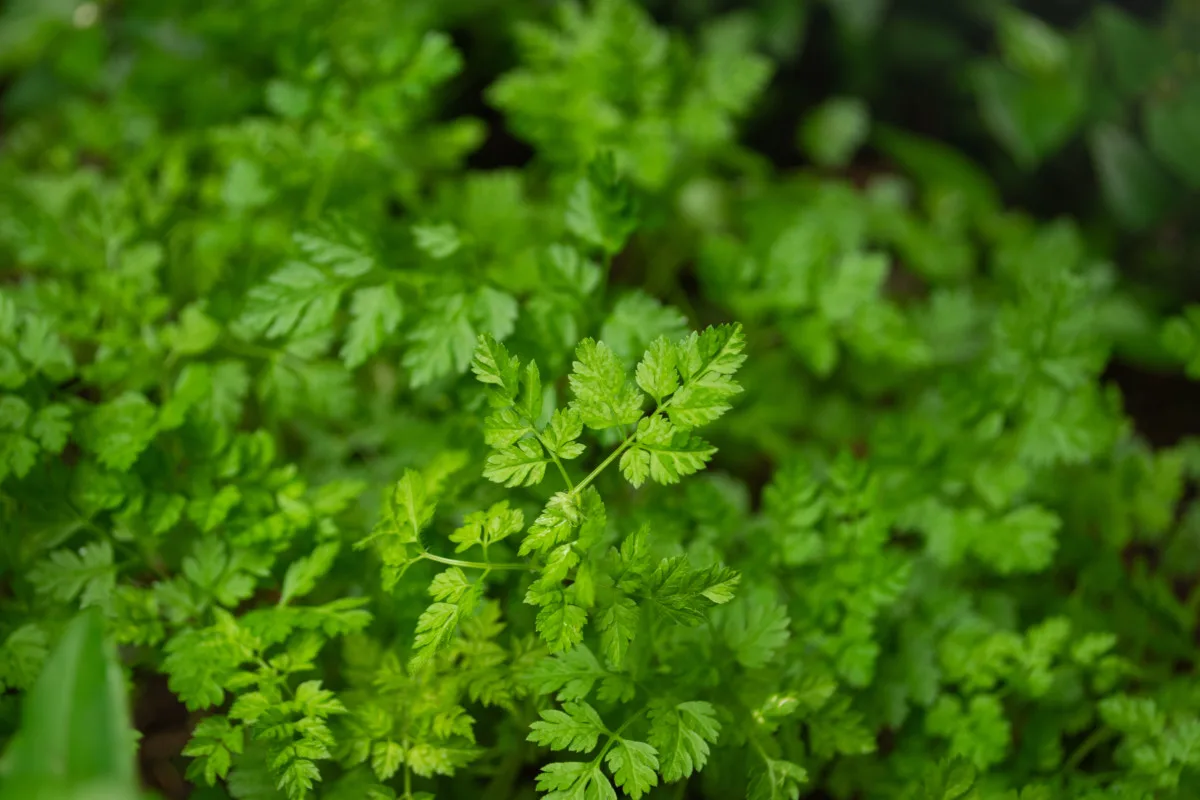
Ah, chervil. Perhaps you’ve seen it mentioned in a hardcover cookbook somewhere long ago. Nowadays, it doesn’t have too much of a social media presence.
But maybe it should. And maybe you can help.
The first step is to recognize it. Secondly, know how to use it in the kitchen. Thirdly, plant and promote it to the best of your ability. Yes, you can even give it a hashtag.
Chefs have been using chervil for ages, knowing full well that it is a key herb in French cuisine. In appearance, it looks a bit like parsley, sometimes being referred to as French parsley. It’s also a member of the carrot family.
Flavor-wise, you may recognize chervil as one of the main ingredients in a classic Béarnaise sauce.
Once you have chervil growing in your garden, you can then harvest it to make your own herbal blends. Chervil is often used as a flavorful garnish, added at the end of cooking. In addition it is essentially appetizing when used as a rub on poultry, fish and potatoes.
Dried chervil is great from the store, but fresh chervil from the garden is even better.
As an annual, seeds need to be sown yearly, in an area of the garden with sun or partial shade. If you have a shady area, that’s what it would ultimately prefer, as it tends to bolt in high heat.
Seeds can be direct sown in the soil, or started indoors if you’d like to harvest a bit sooner. Once it gets growing, it’s quite a hardy plant. If you need another reason to grow it, you will also find that it makes an excellent companion plant for Brassicas, lettuce and radishes. It’s also been said that chervil helps to repel slugs.
3. European Cutting Celery (Apium graveolens var. secalinum)
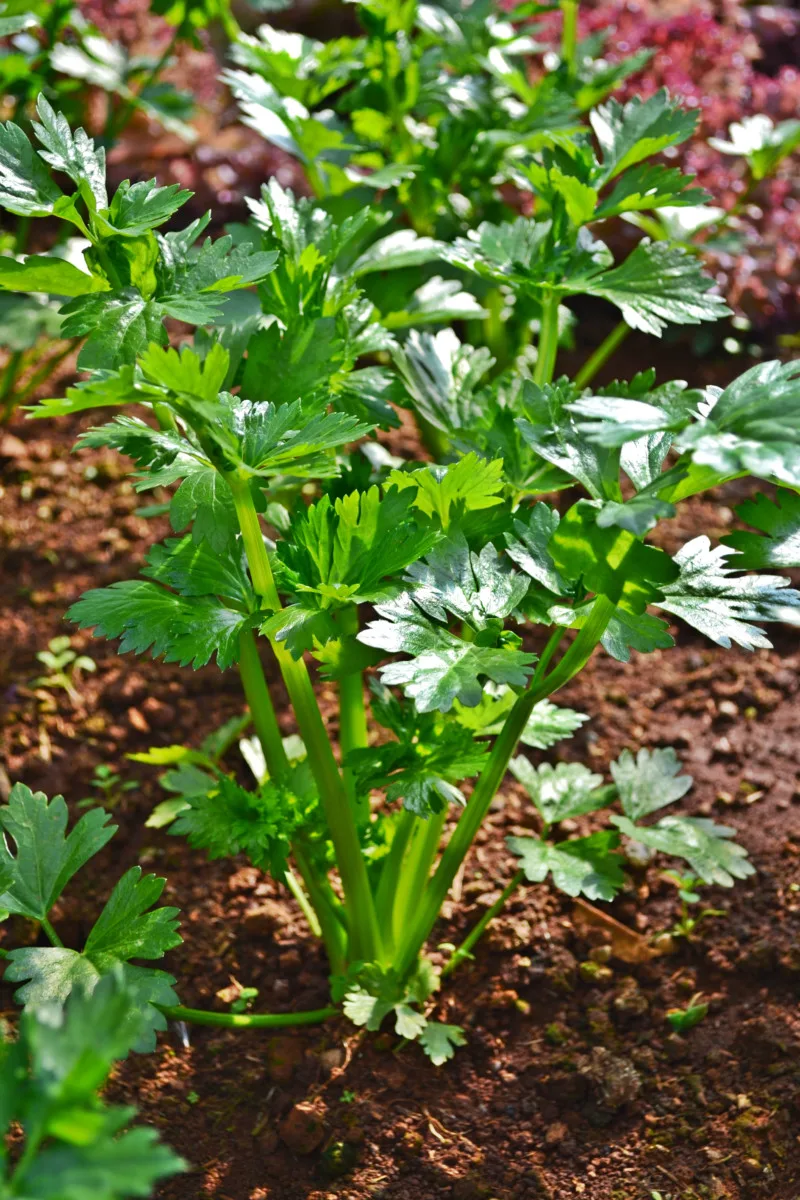
Stalk celery, move over. We need more leaves in our lives, not fibrous stems.
If this sentiment appeals to your taste buds, you might be delighted to find out that not all celery is the same. Most gardening sites usually state that celery is a crop for experienced gardeners, not beginners. When you make the switch from stalk celery to cutting celery, however, your chances of success may improve.
Par-Cel cutting celery is a descendant of wild celery which once grew in marshy areas throughout the Mediterranean. Nowadays, it’s most commonly grown in pots, which makes it suitable for container gardening. Cutting celery also does well in the soil, though it is beneficial to sow seeds indoors, then transplant them out.
Transplanting can occur anytime after all danger of frost has passed.
How to use cutting celery in cooking?
Without the stress of achieving a perfect stalk, which is often cut up into bite-sized pieces, all you have to do, is harvest the leaves for use in salads, soups and stews. Instead of waiting ages for celery stalks (which takes on average 3-4 months!), you can be harvesting your first celery leaves just 4 weeks after transplanting.
It’s not quite a vegetable for your quick-growing emergency garden due to its lower germination rate, but once it’s thriving, it’ll grow in mass. Once the thin stems grow taller, you can harvest them too, by cutting just above the soil. They will continue to regrow, allowing the harvest to extend nearly the entire growing season.
4. Horehound (Marrubium vulgare)
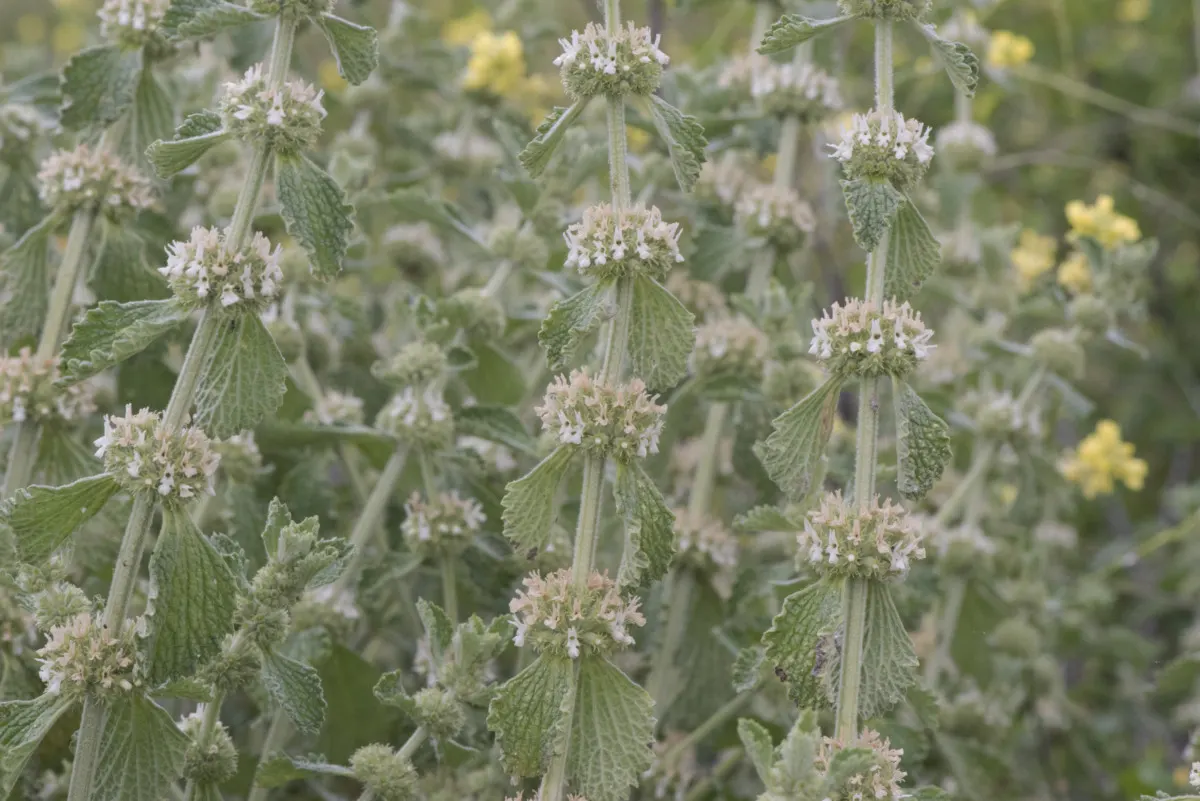
I’m trying to guess your first thought – horehound cough drops or candy?
That’s the first thing I think of anyway. To this day I still remember my Grandma’s glass candy bowl of uniquely-flavored sweet bites.
If you’ve ever seen it growing out in someone’s garden, chances are that you’ve passed it by without much notice. After all, it is a lesser known herb. It also happens to be a member of the mint family. The leaves look similar enough, though later in the season the flowers will tell another tale.
Why – and how to – grow horehound.
For starters, it’s chock-full of vitamins A, B, C and E. Not only does it hold space as an herb for cooking with, but it also has medicinal properties to be explored. Leaves can be used fresh or dried, in teas, tinctures and other concoctions. If you’d like to make your own horehound candy, go ahead and give it a try!
How and where to grow horehound? Like all members of the mint family, it can be grown from seeds, cuttings or root division.
It’s worth noting that horehound prefers full sun in well-draining soil. Horehound is a very resilient plant, even growing in sandy areas with little water. As it’s a spreading plant, that’s a minty trait, you’ll most likely want to contain it in a pot.
5. Hyssop (Hyssopus officinalis)
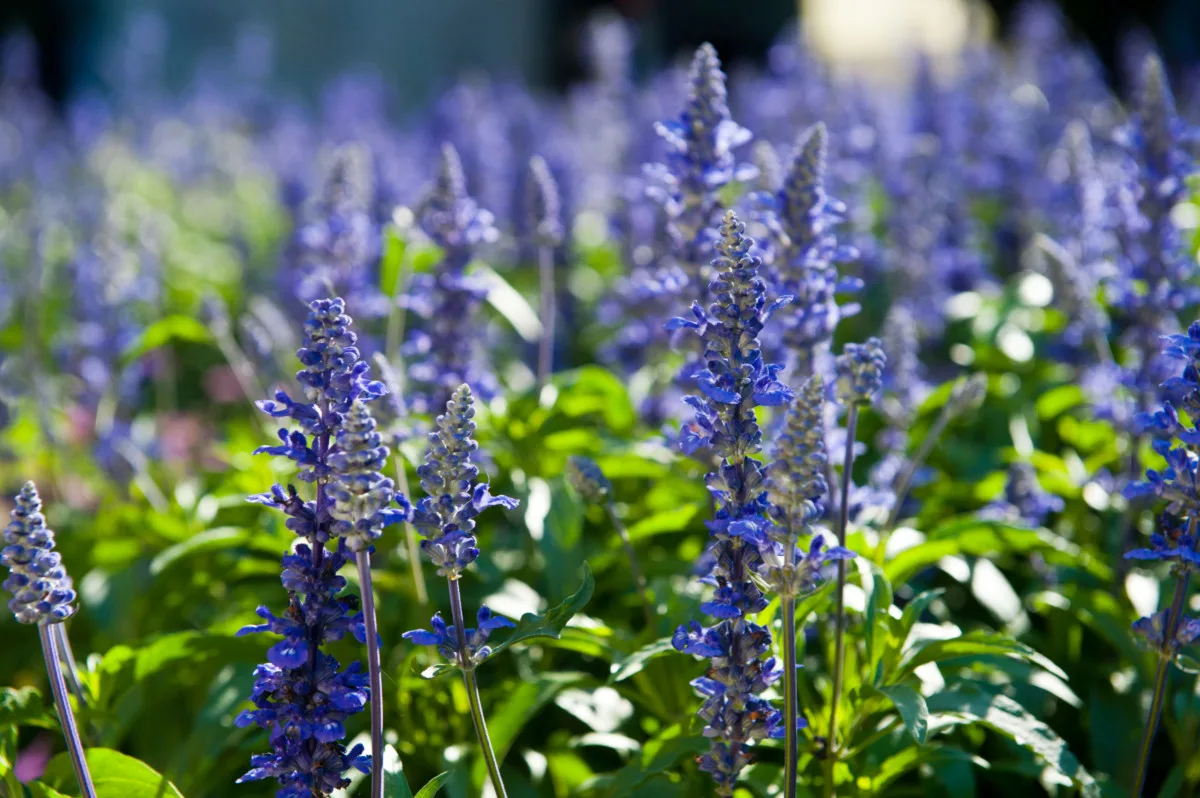
If you are looking to not only provide for your own dietary needs, but for those of garden pollinators as well, be sure to include a few bunches of hyssop in your garden.
In my experience, when hyssop is in full bloom it is full of bees, butterflies, bumblebees, wasps and more. You might even have hummingbirds visit if they are in your area.
It’s another herb in the mint family that likes to take up as much space as you are willing to give it. You’ll certainly find a use for it in a traditional herb garden, as well as being an edge or border plant. Hyssop can also be grown in containers, so long as the pot is large enough.
Reasons To Plant Hyssop
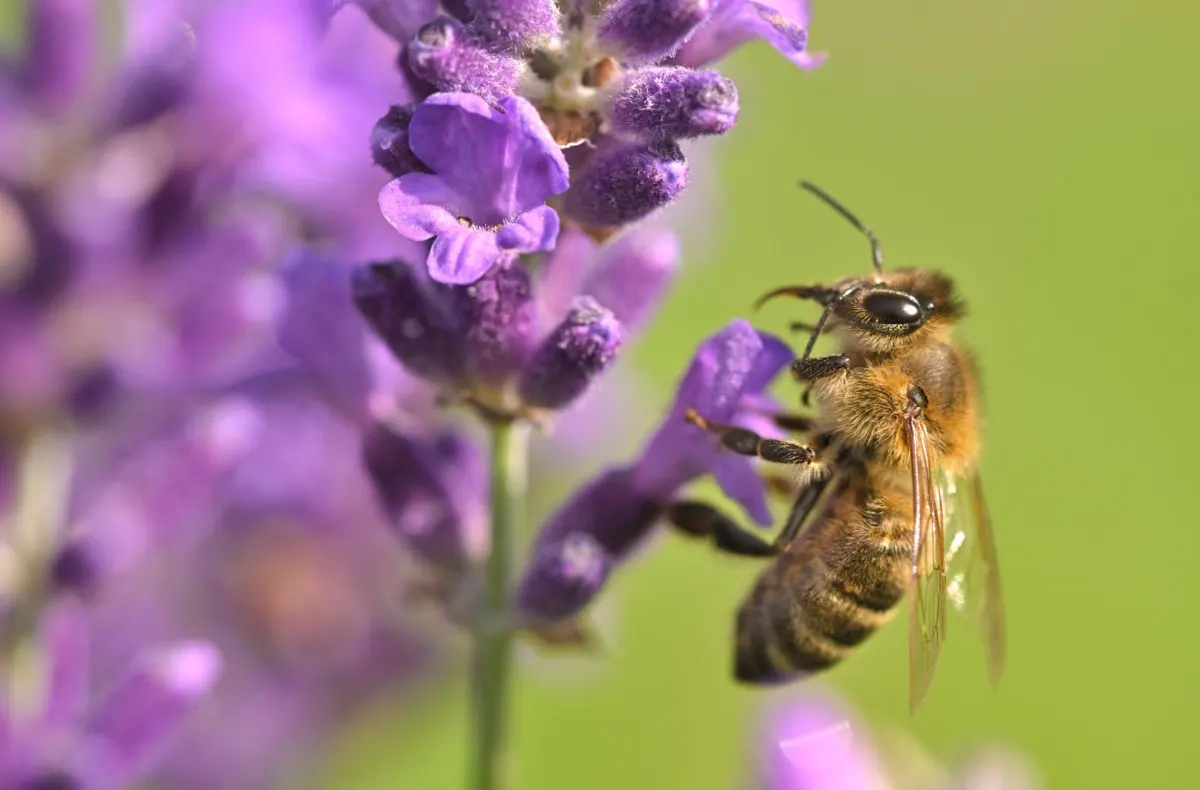
For centuries, hyssop has been added to meaty stews and soups as a bittersweet warming herb. You can continue this tradition by growing it in your garden – there’s not a store around that sells it here. Growing our own is the only option.
The beautiful bright blue flowers are also edible, perfect as a garnish to any garden salad or vegetable dish.
Hyssop has anti-inflammatory, antioxidant and anti-viral properties that have been revered in the battle with viruses and infections. Besides yarrow, it is one of the must-haves in your botanical first aid kit.
6. Lovage (Levisticum officinale)
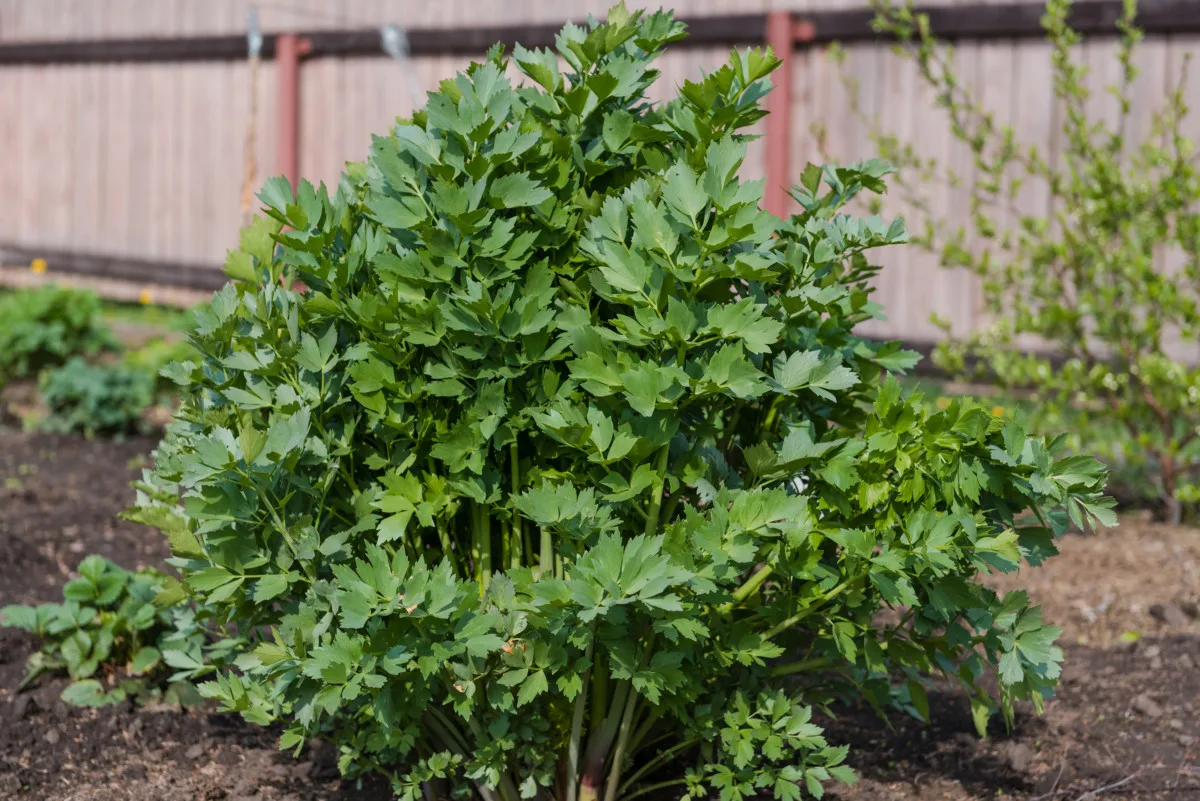
Lovage is indeed a lesser-known herb that is making a comeback in kitchens all throughout the west.
Lindsay shares with us in her article How To Grow & Use Lovage: The Forgotten Herb That Everyone Should Grow, that “Its name is derived from “love ache” and was used at one time to concoct love potions and aphrodisiacs.”
After tasting some lovage flavored soups, I cannot attest to these loving traits, but I do know that lovage is one of those herbs that you either love, or you don’t. You get to decide that for yourself.
Let me suggest that you try lovage, a lesser known herb, in a few dishes before planting it in your garden.
When all is said and done, it grows up to be a very tall plant. Lovage can reach up to 6 feet (2 meters) and it spreads its branches out far and wide. At some point, it may even need to be staked.
All parts are edible, which makes it a fantastic plant to have in the garden. Lovage should receive extra praise for being a perennial. It’s also a survivor of long winters and less than ideal growing conditions. A very hardy herb indeed!
Add it to potato salads, baked chicken, apple chutney, soups, pasta dishes, stews and more.
7. Marjoram (Origanum majorana)
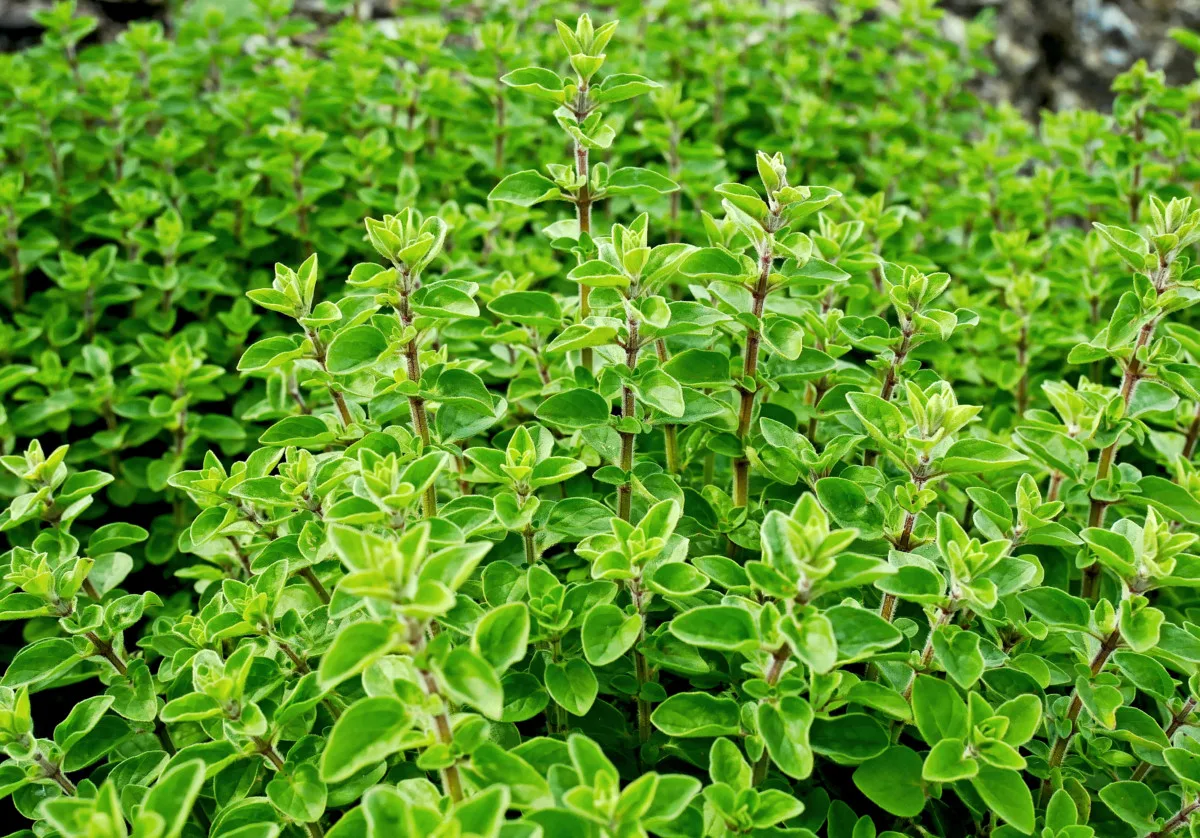
Another wonderful herb for attracting pollinators in the garden is marjoram, not to be confused with oregano (Origanum vulgare). One of the great things about it is that marjoram doesn’t take up a lot of space in the soil. Luckily it is perfectly suited for containers too.
Before planting it out in the garden, it’s good to know that marjoram should be treated as a tender perennial. This may include mulching in winter, or digging it up and bringing it into the safety of a pot in a safe place. However, it has the tendency to self-seed, so you should always be on the lookout for new plants popping up.
While you can sometimes find potted plants at a nursery or grocery store, sowing seeds directly in the soil is simple enough. Do this after all danger of frost has passed. Irrigate as necessary throughout the summer.
Why grow marjoram?
Like most herbs, marjoram has both medicinal and culinary uses.
Marjoram is commonly used for diminishing the symptoms of the common cold, runny nose or cough. It also helps with various digestive problems.
Flavor-wise, marjoram is less intense than oregano, making it a fantastic choice for spicing homemade sausages, green bean casseroles, egg dishes, poultry, pork, beef and eggs.
If you are into Mediterranean, Greek or Italian cooking, make sure to plant some marjoram in your garden this year.
8. Rue (Ruta graveolens)
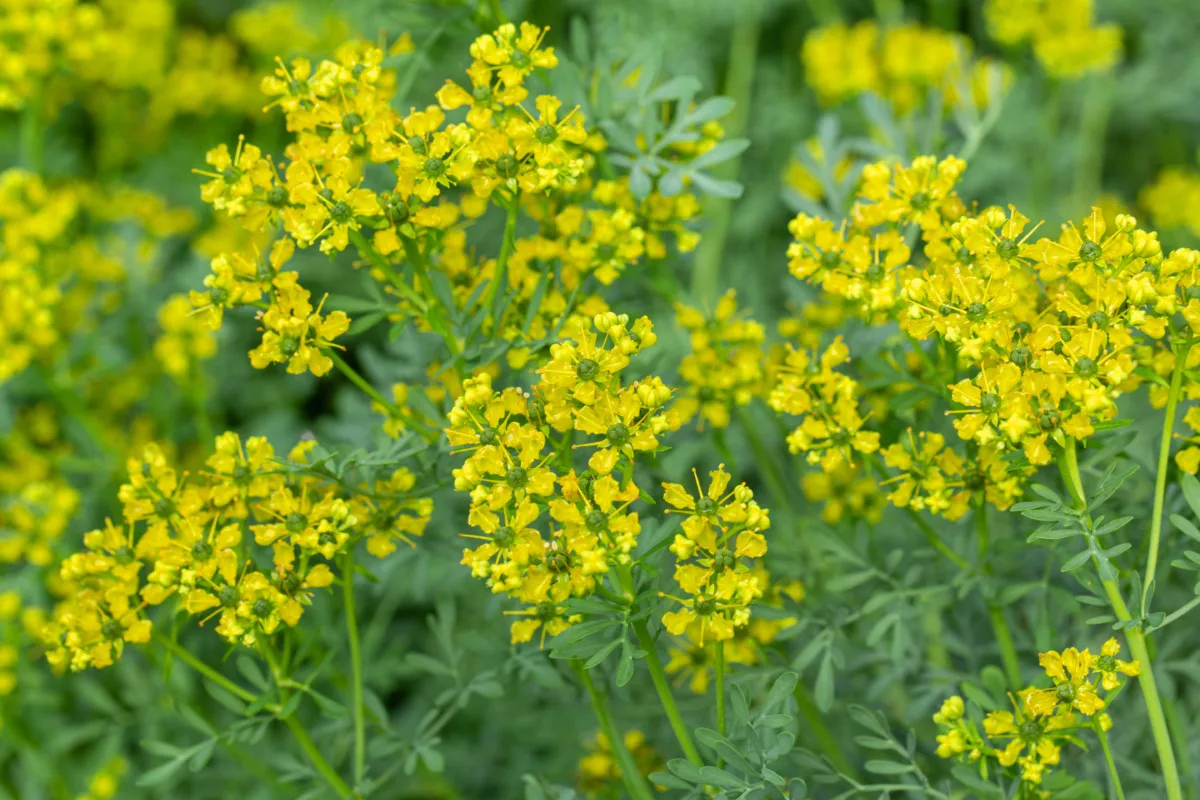
This one may come as a surprise to many of you. For starters, maybe you’ve never even heard of it. And if you know of its potential toxicity, you may wonder why I would even suggest growing it.
For me, rue is an amazingly beautiful plant that’s gotten a bad rap.
Rue is touted as being poisonous. If you think about it, nearly anything can kill you if you eat or drink too much of it. Alcohol, caffeine, heck, even water.
If we come with the mindset that all plants have something to offer, perhaps even in a very small quantity, then perhaps you are willing to have an open discussion with rue.
Andi Wardlaw, a Master Gardener, wrote an article on the subject: Rue An Overlooked, Underused Herb. Read through it, noting that rue has been used for ages, going all the way back to Roman times. The key here is to use little, as in homeopathic amounts.
You can even choose to use none at all, and simply grow it for the sake of wildlife.
Rue, a beautiful lesser-known herb, attracts all manner of pollinators and is a favored plant for Black Swallowtail and Giant Swallowtail butterfly caterpillars.
It grows well in poor or rich soil and acts as a short-lived perennial, staying perfectly happy in the same location for 5 years or more.
If you have children, you may want to skip this herb in favor of more suitable ones, and when pregnant, it’s best to avoid it altogether. However, in the right place, rue will stun your garden with her grace. You could also opt for growing fenugreek instead. Your garden, your choice.
9. Savory – Summer and Winter (Satureja hortensis and Satureja montana)
When a recipe calls for savory, which one do you choose – summer or winter?
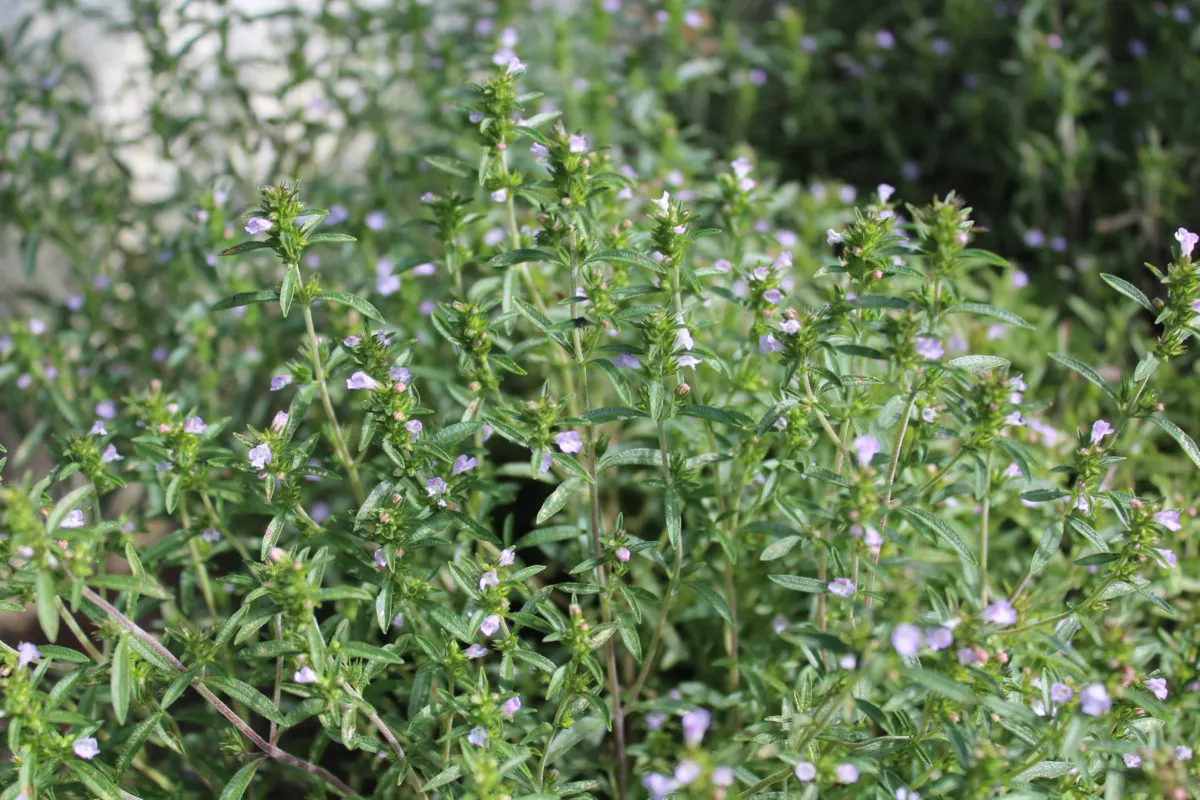
Summer savory is aromatic, with spicy, peppery undertones, whereas winter savory packs more of an aromatic punch. Both are wonderful additions to your spice rack in their own ways.
Summer savory is most commonly added to cheese dishes and bean dishes (it helps to prevent flatulence), as well as eggs, fish soups and sprinkled as a seasoning on garden vegetables. Winter savory is most often used to season sausages, wild game, lamb, pork, eel and mackerel dishes.
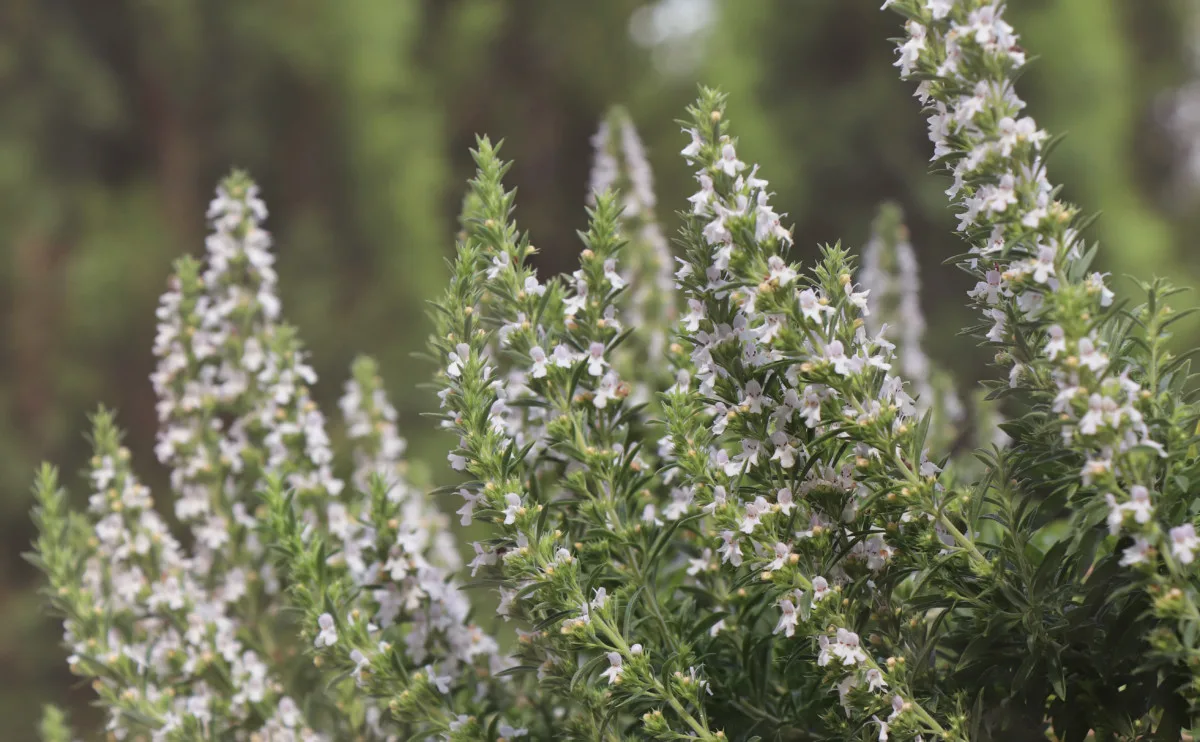
But the culinary aspect is not the only difference. They look similar, though they don’t act the same in the garden. Winter savory can be treated as a perennial, while summer savory is always an annual that needs to be reseeded year after year.
An unexpected reason to use savory of either kind in cooking, is that it nearly eliminates the need for both salt and pepper. If you are looking to reduce your salt intake, consider growing a few savory plants this year. They are also suitable for container gardening and are perfect for mixing and matching with other herbs in the same pot.
10. Sorrel (Rumex acetosa)
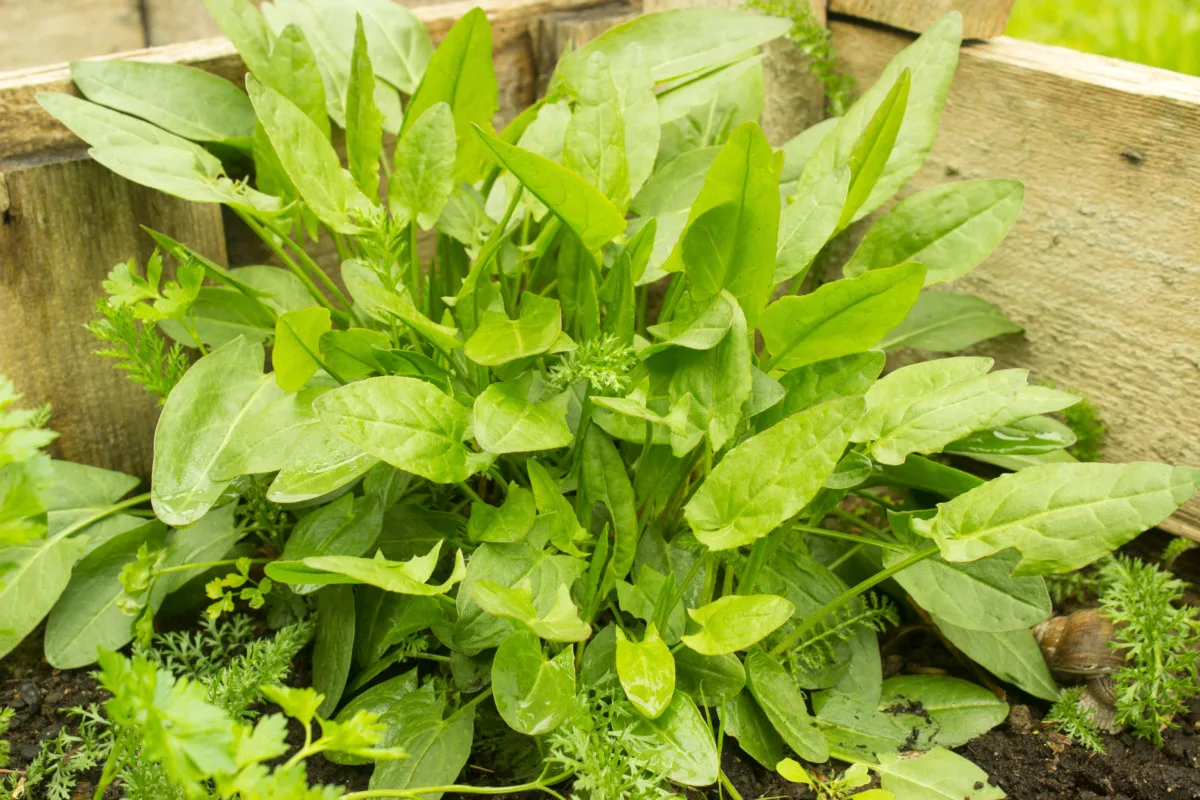
Sorrel can be used as both a vegetable and an herb. It depends on whether it’s the main event such as in a sorrel soup, or as an herbal embellishment in your marinades or salad dressings.
It may be a less familiar herb in modern times due to its intense flavor, which is lemony and sour. For others, it seems that the fear of oxalic acids is the factor that keeps it out of both garden and diet.
Whatever you do, don’t cook sorrel in an aluminum pot or pan. By all means, don’t create any unnecessary harm to your cast iron pans either! It will result in an undesirable metallic flavor that will be pushed away at the table.
So, that’s the bad before the good. Now, let’s get to the tasty part.
Benefits of growing sorrel in the garden:
It doesn’t matter whether you sow the seeds of common sorrel, French sorrel (milder than common sorrel) or red-veined sorrel (also with a mild tartness).
The point is that you should grow it. After all, sorrel is one of the easiest greens to grow. It survives with little attention, comes back year after year (another fantastic perennial) and it is among the first greens to emerge every spring.
Finding a patch of bear garlic is something to look forward to in the wild, but sorrel in your garden? Yeah, it’s similarly exciting, especially if you experience long winters.
Sorrel has a lot of vitamins and minerals your body needs:
- vitamins A, C and all the B’s
- calcium
- iron
- magnesium
- phosphorus
- potassium
In the kitchen, sorrel is often added to fish meals, tossed in creams and butter, chopped into stir-fries, layered in sandwiches and more.
11. Stevia (Stevia rebaudiana)
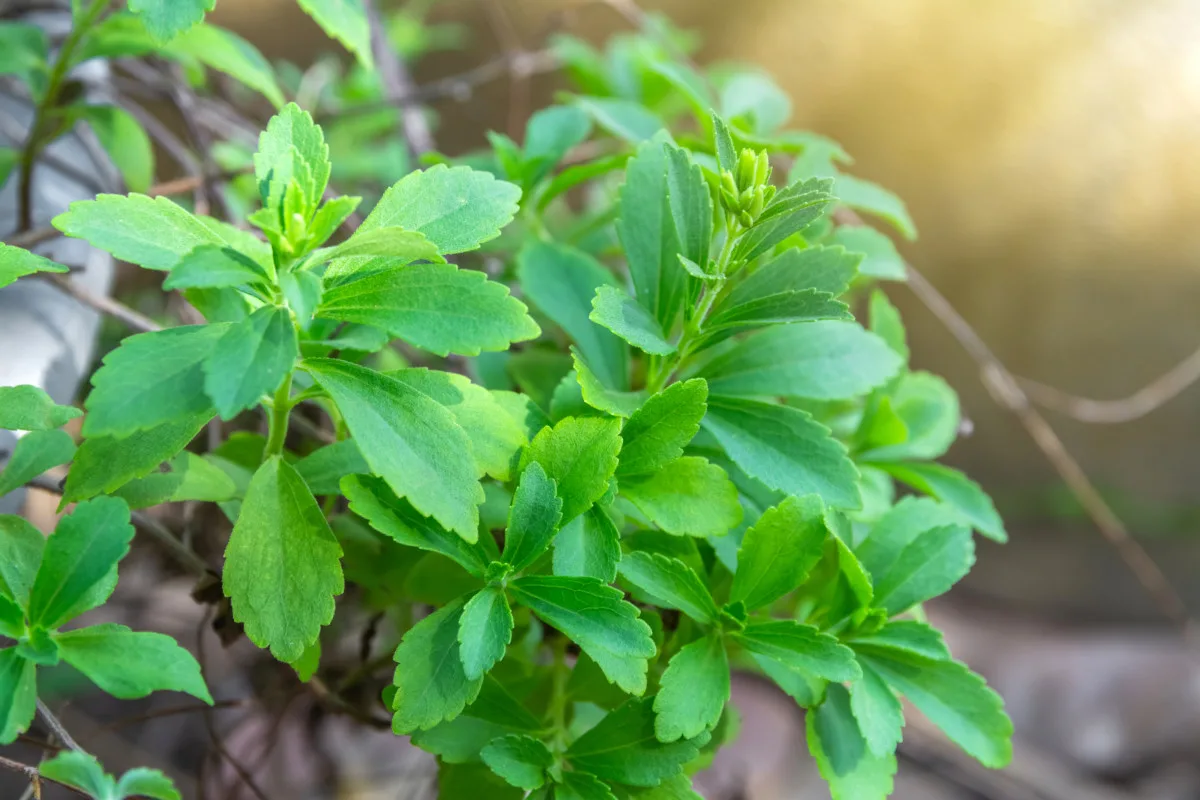
Stevia isn’t quite long forgotten, rather it is being more recently discovered. Chances are good you’ve already tried it in a sweet tablet form. Popping one little drop into your coffee. And if you read the package, you’d have seen it advertised as sugar-free or a sugar alternative.
That’s exactly it, it’s sweet. Super sweet. Some even say it is 200 to 300 times sweeter than table sugar. Which means you don’t need a ton of it to sweeten your food.
If you could provide your own sweetener, would you be willing to do it?
While there are plenty of tart and bitter herbs out there, sweet herbs are limited. Of course, you could always try your hand at beekeeping (provided you’re not allergic to stings), but that takes more expertise than growing stevia.
Stevia may just be the plant for you if you are looking to cut back on your sugar intake. You can even make a homemade green stevia powder by drying the leaves and using it throughout the year in all manner of baked goodies.
But first, you’ll need to harvest the fresh green leaves. Here’s a fantastic article to read – Herbal Guide to Stevia Leaf: How To Grow, Harvest and Prepare the Stevia Plant
12. Tarragon (Artemisia dracunculus)
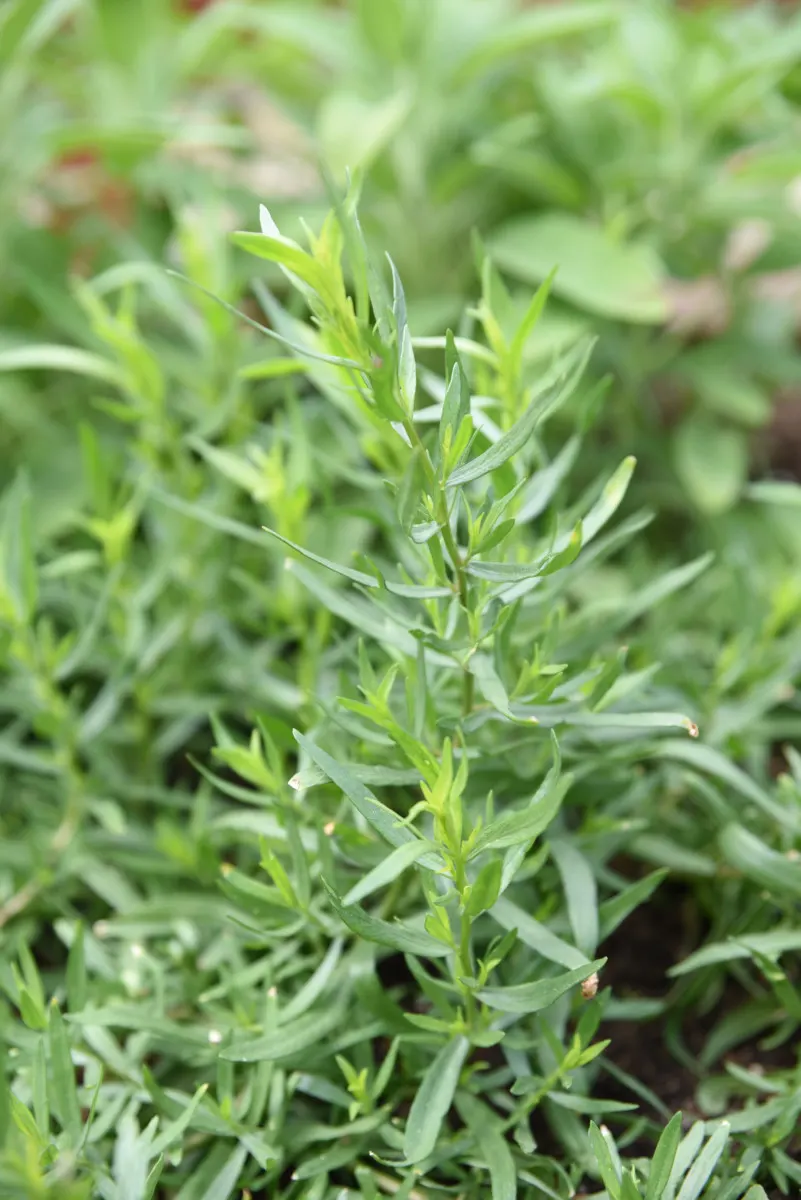
Depending on the climate where your garden lives, tarragon may be considered an annual or a perennial. It’s said to be a perennial in zone 4 and warmer.
Tarragon, also called estragon, is a lesser-known herb native to western Asia and southern Russia, perhaps even Europe. It spread from one continent to another by means of trade, but was it an exchange of love, or just a commodity to sell? Possibly the latter, for even with its licorice-like flavor, I don’t think it’s had the chance to shine on the American table.
If you are into French cuisine, you’ll likely have lapped it up in a béarnaise sauce, along with some chervil from up above. If not, find a tasty recipe online and try to replicate it in your own kitchen – with your own tarragon, of course.
Tarragon hardly ever sets seed, which may be a pre-warning that propagating from seed may produce some difficulties.
There are 2 ways to propagate tarragon.
First is by tip cuttings.
Second, by root division.
If you have a friend or a neighbor with tarragon in their garden, ask them if you can take a snip. If their plant is large enough, then perhaps it is ready to be divided in early spring.
Once the tarragon is thriving in your garden, say in the second year after transplanting, you can harvest leaves from May till October. The younger the leaf, the more tender it will be.
Dry the leaves or chop them up fresh and toss them in the freezer. Alternatively, you could make an infused-vinegar with tarragon leaves. It’s wonderfully fragrant and tantalizing for the taste buds!
13. Tulsi (Ocimum tenuiflorum or O. sanctum)
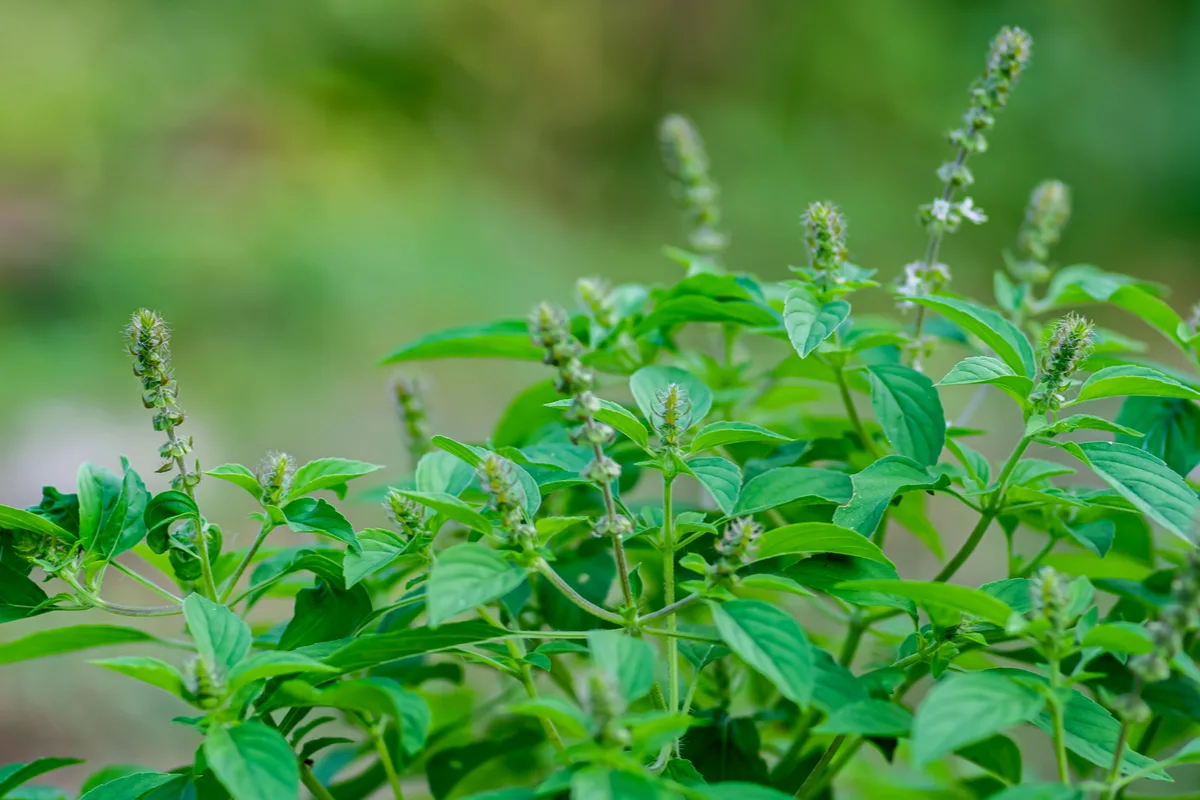
Yet another member of the mint family (Lamiaceae) for you to enjoy – Tulsi, otherwise known as Holy Basil.
It’s a highly revered and sacred herb that brings “lightness to the mind, body and spirit”. I have a feeling we could all use a lot more of that these days.
Tulsi is native to Southeast Asia, including India. But, as long as you have sufficient sunlight and heat, know that it is possible to grow this lesser-known herb in your garden too. It might take growing it in a container, so you can set it against a wall, out of the way of the cold wind and rain.
I sense you are still wondering, what’s tulsi good for? And why should I grow it in my garden?
- tulsi balances stress hormones
- relieves fever
- improves respiratory disorders
- fresh leaves are an excellent source of vitamin K
- natural mouth freshener (helps combat bacteria and cavities)
- and it boosts your immune system
All of these benefits make it a wise choice for your garden.
A quick online search will leave you with plenty of tulsi recipes to choose from, should you be in need of a creatively tasty way to eat, or drink, your harvest.
14. Wild bergamot (Monarda fistulosa)
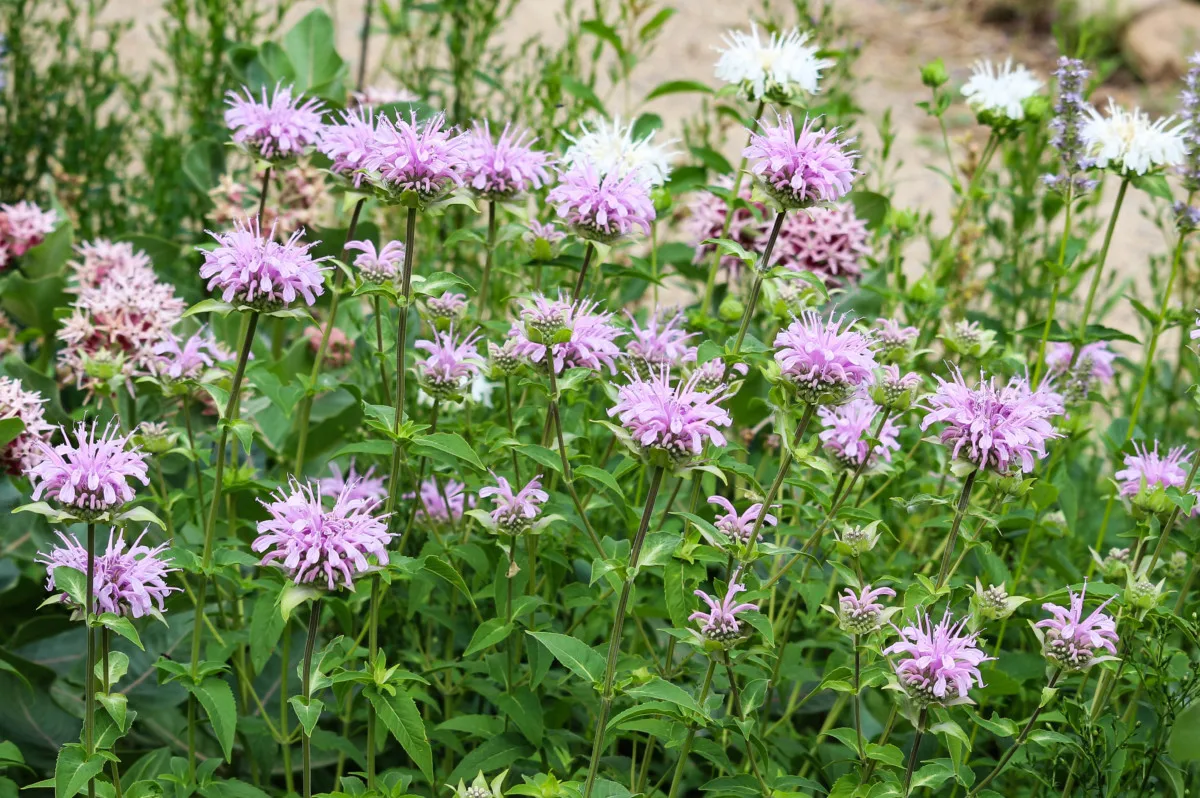
I’m not sure I’ve ever tasted sweet bergamot, or seen it in any garden, only viewed it in textbooks. This is definitely a new, lesser-known herb for me as well.
Not only does wild bergamot have a variety of medicinal uses, but it is also delicious and edible, says Gary Davis from Lost in the Ozarks.
Being in the mint family, it should naturally be expected that it spreads by both seeds and rhizomes. It’s also useful to know that sweet bergamot is native to North America and that’s where you’ll find it.
In the garden, you can utilize it as an edging plant, as it grows from 2′ to 5′ tall. Flower-wise, it has clusters of blossoms ranging in color from purple to pink and white. The red-flowered look-alike is a different species (Monarda didyma), which is more commonly known as bee balm or mint leaf bee balm. Bees love it, even hummingbirds do.
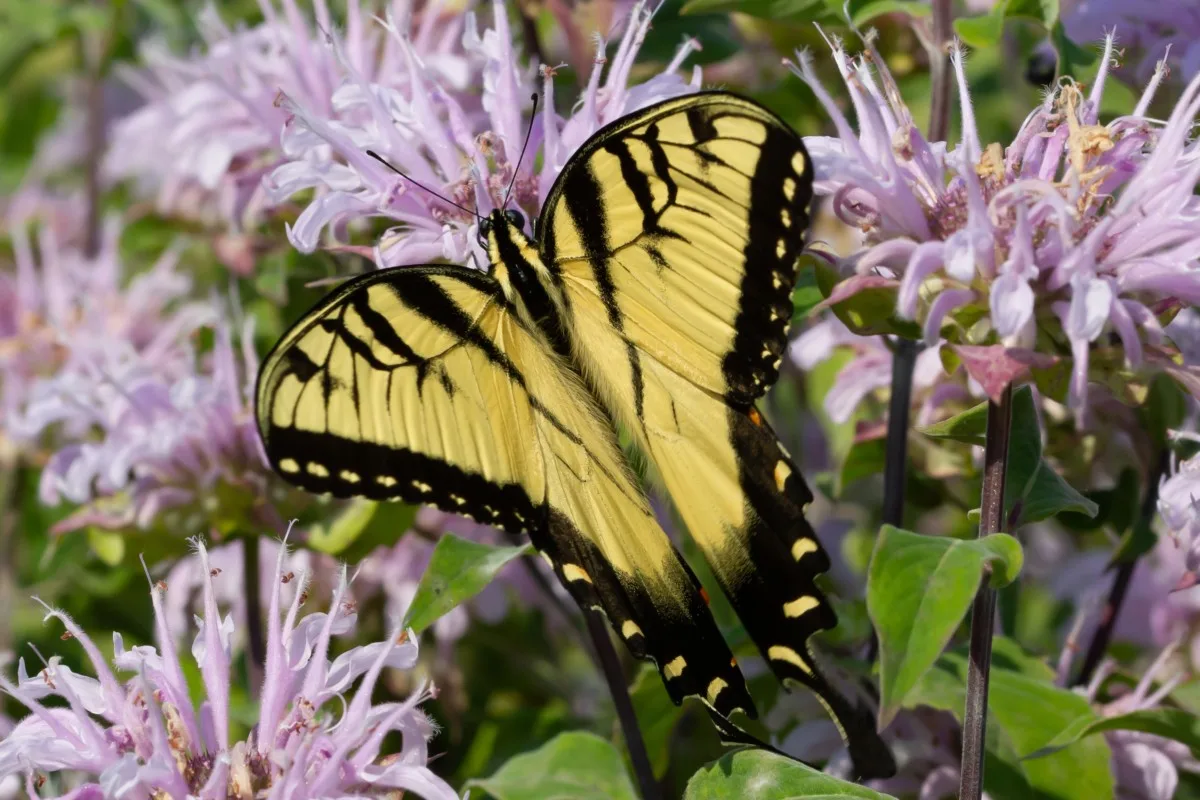
All of wild bergamot is edible.
From flower to stalk and, of course, the leaves, the entire plant is edible. Use it in teas, cakes, sauces or fruit salads.
Medicinally it has been used by Native American tribes for hundreds of years. Primarily to treat colds, coughs and the flu. Bergamot can also be used to cleanse a wound.
Bergamot even makes a wonderful addition to your forest garden.
There you have it. Fourteen more herbs to rediscover as you increase the biodiversity of your garden and the diversity of your diet.
Which lesser-known herb will you choose to plant this year?

Get the famous Rural Sprout newsletter delivered to your inbox.
Including Sunday ramblings from our editor, Tracey, as well as “What’s Up Wednesday” our roundup of what’s in season and new article updates and alerts.

